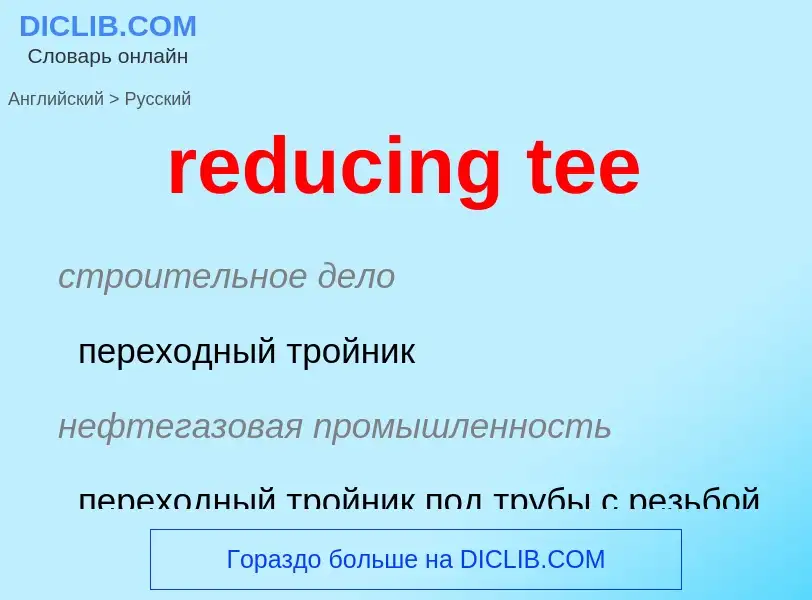Translation and analysis of words by ChatGPT artificial intelligence
On this page you can get a detailed analysis of a word or phrase, produced by the best artificial intelligence technology to date:
- how the word is used
- frequency of use
- it is used more often in oral or written speech
- word translation options
- usage examples (several phrases with translation)
- etymology
reducing tee - translation to russian
строительное дело
переходный тройник
нефтегазовая промышленность
переходный тройник под трубы с резьбой разного диаметра
Definition
Wikipedia
A reducing sugar is any sugar that is capable of acting as a reducing agent. In an alkaline solution, a reducing sugar forms some aldehyde or ketone, which allows it to act as a reducing agent, for example in Benedict's reagent. In such a reaction, the sugar becomes a carboxylic acid.
All monosaccharides are reducing sugars, along with some disaccharides, some oligosaccharides, and some polysaccharides. The monosaccharides can be divided into two groups: the aldoses, which have an aldehyde group, and the ketoses, which have a ketone group. Ketoses must first tautomerize to aldoses before they can act as reducing sugars. The common dietary monosaccharides galactose, glucose and fructose are all reducing sugars.
Disaccharides are formed from two monosaccharides and can be classified as either reducing or nonreducing. Nonreducing disaccharides like sucrose and trehalose have glycosidic bonds between their anomeric carbons and thus cannot convert to an open-chain form with an aldehyde group; they are stuck in the cyclic form. Reducing disaccharides like lactose and maltose have only one of their two anomeric carbons involved in the glycosidic bond, while the other is free and can convert to an open-chain form with an aldehyde group.
The aldehyde functional group allows the sugar to act as a reducing agent, for example, in the Tollens' test or Benedict's test. The cyclic hemiacetal forms of aldoses can open to reveal an aldehyde, and certain ketoses can undergo tautomerization to become aldoses. However, acetals, including those found in polysaccharide linkages, cannot easily become free aldehydes.
Reducing sugars react with amino acids in the Maillard reaction, a series of reactions that occurs while cooking food at high temperatures and that is important in determining the flavor of food. Also, the levels of reducing sugars in wine, juice, and sugarcane are indicative of the quality of these food products.

